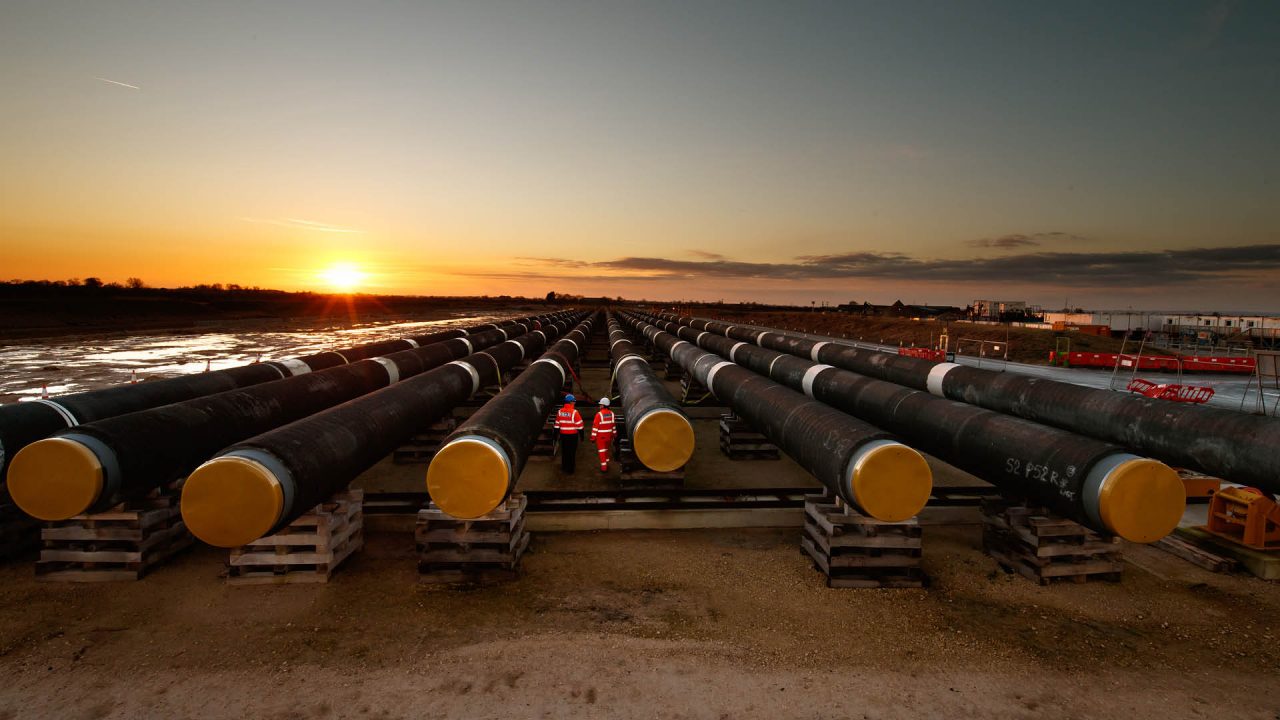

Infrastructure
| Sector | Infrastructure |
| Sub-sector | Utilites |
| Location | United Kingdom |
From the late 1960s, the NTS was further expanded to distribute gas discovered in the North Sea and to enable Britain to bolster its energy security by accessing Liquified Natural Gas imports from further afield.
Today, gas is used by around 85 per cent of UK households to meet their heating needs.2 In 2023, it contributed to around 32 per cent of the UK’s annual power generation – increasing significantly at peak times to help balance electricity supply and demand.3 Gas is also a key input for a range of industrial processes including glass, chemical, cement and steel production. With gas relied upon by homes, businesses, industry and power plants, the pipelines of the NTS and storage sites around the country are part of the backbone of Britain’s energy system.
While underpinning domestic energy, the connectivity of the Britain’s extensive gas infrastructure to the North Sea and international markets has also made it a significant contributor to the energy supplies of the island of Ireland and continental Europe. Britain is now a key transit route for gas, with excess supplies sent via a series of interconnectors to help diversify the region’s energy resources. The NTS supplies gas to the wider region through interconnectors to the Netherlands, Belgium, Northern Ireland and the Republic of Ireland.
Macquarie recognised the NTS would likely play a vital role in ensuring both UK and European energy security over the coming decades. It also recognised that a majority of its pipes were ready to store and transport renewable natural gas, hydrogen and carbon dioxide, with limited modifications required to the system to support a cost-effective energy transition.
These transactions included the acquisition of a portfolio of around 7 million domestic, industrial and commercial gas meters as well as the provider of emergency repair and response services to Britain’s entire gas industry. These activities were successfully demerged from the multi-utility National Grid in early 2023, with the newly renamed National Gas Transmission, National Gas Metering and National Gas Services uniting to form an independent company named National Gas.
Upon its initial investment, Macquarie outlined its intentions for the NTS to continue to maintain a safe, secure and reliable source of energy for over 23 million homes, 500,000 businesses, 35 power stations, 15 industrial users and the 9 gas storage sites it supplies.4 Macquarie also saw an opportunity to strengthen National Gas’ reputation for providing leading maintenance and management services to the industry and across its gas metering portfolio.
With an eye to the future, Macquarie began backing a long-term role for National Gas at the centre of Britain’s energy security and transition – supporting focused investment in the NTS to create a next generation transmission system capable of transporting the low carbon gases, such as hydrogen and biomethane, that will be essential to achieving net zero.
Macquarie underlined its commitment to the company and its investment plans in 2024, leading a consortium to acquire the remaining 20 per cent equity interest in National Gas held by National Grid.
Outcome
With the European Union preparing to blend hydrogen into the continent’s gas transmission networks, it is also seeking to ensure the continued interoperability of local infrastructure.5 As part of this, National Gas is ramping-up the transition of the NTS to carry hydrogen and carbon dioxide through pioneering programmes including FutureGrid, Project Union and the Scottish Cluster.
Through the £12 million FutureGrid project,6 National Gas has worked closely with its technical partner DNV, regulators, academic and industrial partners to build a micro-transmission network transporting hydrogen at different blends with natural gas to test the readiness of existing infrastructure and appliances to operate safely and reliably using the lower carbon alternative. Results from the landmark initiative have demonstrated the NTS is capable of safely transporting blends of 5, 20 and 100 per cent hydrogen. As the first step needed to progress a full-scale conversation of the NTS to hydrogen, the results could help demonstrate a transition to the alternative fuel is possible in the years ahead.
National Gas has secured initial funding to advance Project Union and is currently testing the first phase of a planned 2,500-kilometre hydrogen backbone capable of transporting 100 per cent hydrogen by volume from production and storage sites to key industrial clusters nationwide. If completed, Project Union could help leverage the UK’s existing infrastructure and renewable energy potential to decarbonise heavy industry and dispatchable power generation. It also has the potential to unlock the local hydrogen economy, helping users access hydrogen via the NTS as the UK and Scottish governments pursue their plans for 10 and 5 GW of production by 2030, respectively.
In addition to supporting a growing role for hydrogen in the energy mix, National Gas is working to repurpose 300 kilometres of its network and build a further 70 kilometres of pipelines to transport carbon dioxide onshore. This work with partners around the Scottish Cluster, a collection of industrial carbon capture and carbon dioxide transportation and storage infrastructure projects, has the potential to make the technology a reality in Scotland’s industrial heartland. In doing so, it can help support the long-term future of a range of industries that are currently difficult to electrify.
By backing these pioneering initiatives and continued investment in the NTS, Macquarie believes National Gas can play an important role in the energy transition and maintain its position at the centre of the UK’s energy system.
homes supplied with gas
businesses supplied with gas
power stations supplied with gas
of electricity generated by gas
Learn more